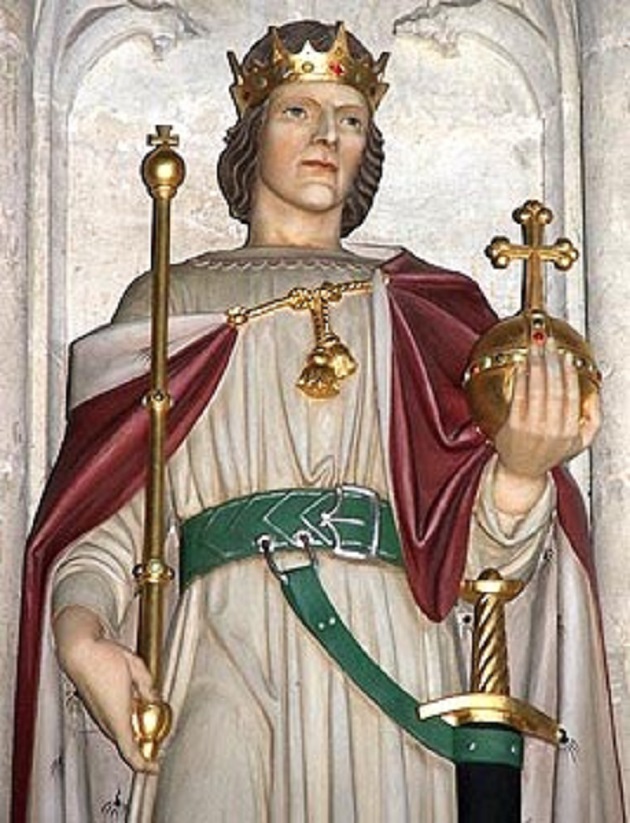| Title | Written by my Auntie Mabel |
| Date | Undated |
| Location | Yeadon |
| Written By | Mabel Harrison (Deceased) |
| Comment | Read on … |
We don’t know how long ago it was, when the forests that covered most of Yorkshire, a settlement was formed upon the hill, that is now Yeadon.
Our County was really an Anglo-Saxon creation, but many different groups of people invaded and then settled down, each bringing different cultures and skills.
The Brigantes were here – tribes that occupied the middle and north Pennines – and each tribe had its own King and Queen.
When the Romans came, some inter-married while others fought them bitterly.
The Brigantes built quite a few towns, the nearest to Yeadon being Olicana, now known as Ilkley.
The Romans made roads and built garrisons around Yeadon.
One road from York to Rochester ran through Adel, over Otley Chevin, across to Ilkley, and is clearly marked joining the Blubberhouses road near to Addingham.
Maybe a Roman station on Rawdon Billing overlooked Yeadon, and we wonder how the inhabitants of our village lived through those days.
Did they welcome the soldiers?
Or were they perhaps. taken prisoners and forced to work in the Lead Mines as slaves on Greenhow Hill?
Did the Romans take some of the British Children as slaves to Rome?
After 300 years of Roman occupation, the Anglo-Saxons settled down to a life of agriculture, herding cattle, living in small communities built in clearings in the forests.
This Saxon period lasted 650 years until the Norman invasion and the first part of it is referred to as the Dark Ages because so little was known of this time, until excavations and discoveries by archaeologists have recently shown the life lived in those far off days.
The latter part of the 650 years is called the Medieval Age, when records were first kept.
In this six and a half centuries Britain was invaded by Danes, Norsemen, Angles, Saxons and Jutes, who fought the British, then later settled down and eventually became the English nation, who were later conquered by the Normans.
The Yorkshire character is a compound of all these various people who came from Eastern Countries, just as in latter years the British settled in the new continents of Africa, Australia and America.
The common name “ing” incorporated into place names in our district meant to the first Anglicans “the place of the people of ‘so and so'” Such as Addingham.
The Angles used a name to denote a clearing in the forest – “Leah” which changed to “Ley” and we are surrounded by settlements such as Shipley, Guiseley, Otley, Apperley, Burley, Ilkley and Farnley.
During all this change there was still a strong Celtic element who formed a kingdom named Elmet and spread along the lower part of the Aire and the Wharfe.
Leeds named Loidis was within the forest of Elmet.
These Celts were numerous enough to stop the Angles until Elmet was conquered by King Edwin just after the year 616.
Then the Angles made many clearings and built their special hamlets, and in Airedale formed Farsley, Rodley, Calverley and many more.
King Edwin married Aethelberht of Kent who was a Christian and was converted and baptised at York in 627.
After the peaceful 8th century passed the Danes invaded, they settled, bringing their own language to enrich the dialect of Yorkshire for all time.
From them we get “gate” meaning street as in Briggate and Ivegate.
“fell, beck, mere, moss, heath, ling, thwaite and moor” as well as words ending in “by” very common in these parts, were brought by Vikings.
In 1016 Canute of Denmark became King and so the Danish influence was more and more marked.
Yorkshire was divided into Thirds (Ridings) and the Ridings into Wapontakes by the Danes.
In each Wapontake there was a meeting place where great courts were held to pass judgments and laws.
Yeadon was in the Skyrack Wapontake which derived from the “Shire Oak” at Headingley where the meetings were held.
When the Doomsday book was written, Yeadon, Horsforth and Rawdon were known as Terra Regis Lands, which meant lands belonging to the King.
Yeadon was first called Iadun, which later changed to Yeadon but was spelt at first Yedon which is the way people often pronounced it in the olden days.
The first record of it says that Iadun consisted of two manors held by Saxons, whose names were Gamel and Glunier, who were contributors to the revenues of Kirkstall Abbey.
In those days the people who owned land gave timber, stone, animals and food to the monks building the Abbeys.
Previous Comments:
smbork
Is Mabel Harrison the one who lived on Hauxwell Drive. We lived opposite. Very interesting article. My Grandmother, and her generation still called it Yeddon. When I went to visit my husband’s grandparents in the south of Denmark they stlll spoke the old dialect. I could almost understand them. They would ‘side’ the table etc. ‘Yorkshire’ wasn’t just an accent but had its own vocabulary and that was held in common with South Jutland. What a pity we have lost it.
08 August 2013.
adminCH05
Mable Harrison lived on Haw Avenue, Yeadon.
08 August 2013.
Page 1 of 3 More >>
Consolidated by Jack Brayshaw. 03 September 2022.
Last updated: 03 September 2022.





